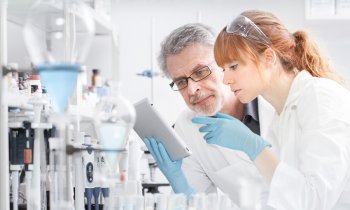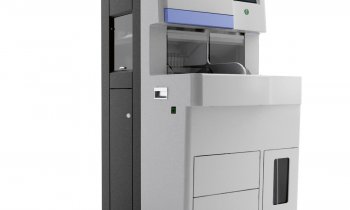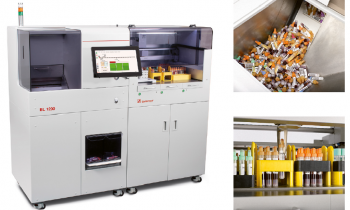From lab to POCT
DNA sequencing shift to point-of-care testing
Health analysts have predicted that DNA sequencing will shift from a laboratory-based setup to point of care testing within the next five years.

Analysis from Frost & Sullivan has suggested that the Western European next-generation sequencing (NGS) market is poised for steady growth with the emergence of new applications such as non-invasive prenatal testing and comprehensive oncology panels. Driving that scenario will be increased demand and uptake of more personalised healthcare, according to Frost & Sullivan Healthcare Senior Industry Analyst Divyaa Ravishankar. She said: “Given the recent technology advancements in Europe, the future of DNA sequencing will move away from a laboratory-based setup to point of care testing. We expect NGS to become an area of interest to all market leaders within the point of care testing domain, as they strive to bring sequencing from ‘bench to bedside’.”
NGS manufacturers are further tapping into this space by forming partnerships with molecular diagnostic companies to quicken NGS adoption in clinics, particularly for oncology-based testing. With the Western European Next-generation Sequencing Markets earning revenues of $381.9 million in 2013, and estimated to reach $697.3 million in 2018, major growth areas will include pre-implantation genetic diagnosis, oncology testing, infectious disease, human leukocyte antigen typing, and companion diagnostics.
“Companies within the space of personalised healthcare are designing instruments to target specific needs across the clinical diagnostic spectrum, therefore adding NGS capabilities to their portfolio,” said Ms Ravishankar. “As long as the genomic era interfaces with personalised medicine, NGS uptake will continue.” Ms Ravishankar explained that several NGS companies such as Genapsys, Gnubio (recently acquired by Biorad), and Genia (recently acquired by Roche) have innovative technologies in the pipeline with a focus on iPad/chip-sized devices using semiconductor technology giving out results within a short turnaround time.
“Such tests will find their place in patient clinics and hence NGS will soon be offered in a physician setting. It’s just a matter of time when they establish themselves in the clinical space. However, in a physician setting I believe that they will be more used as complimentary tests but not as conclusive tests,” she said. “These tests can lead to the first step in diagnosis and then the patient can be subjected to rigorous testing which could be more extensive and expensive in nature. Also, point of care testing minimizes the use and expenditure on reagents.” Ms Ravishankar stressed that the POC mode of sequencing will provide simplified handling, enable fast accurate results, reduced sample volumes and reagent and have produce minimal waste. Non-skilled personnel can also perform the tests, which will initially be in areas such as infectious disease testing, preliminary oncology testing, IVF clinics, pathogen testing in the food industry. However, Frost & Sullivan suggests challenges to the shift could lay in physician acceptance, established and proven clinical significance of these tests, reimbursement challenges for labs/physician, cost of hardware for data infrastructure and file size. “As much as the progress made in sequencing instruments, the data handling capacity has not yet made its giant leap,” she added.
“Until last year the NGS platforms were more preferred as discovery tools to provide whole genome coverage but it would require so many days to sequence it. Today, in the clinical era, we are looking at diagnostic platforms that can provide a fraction of the coverage but will produce results within few hours of sequencing.”
There will be benefits for clinicians and hospitals with long-term savings such as avoidance of test redundancy owing to NGS being more sensitive, experimental advantages will include eliminating the need for in vivo cloning, transformation or colony picking while patients will benefit with reduced turnaround time as DNA based tests are more sensitive in comparison to immunoassays. “With effective diagnosis in a single visit, and as sequencing gets cheaper, there will be more willingness from patients to undergo these tests,” concluded Ms Ravishankar.
Profile
Divyaa Ravishankar is a Senior Industry Analyst in the Global Healthcare Practice at Frost & Sullivan. She has diverse expertise within healthcare IT and Lifesciences which mainly constitute laboratory research and management consulting. Ms Ravishankar also has an industry experience covering a broad range of sectors, leveraging long-standing working relationships with leading industry participants in areas like in vitro diagnostics, pharmaceutical and biotech companies.
07.08.2014











